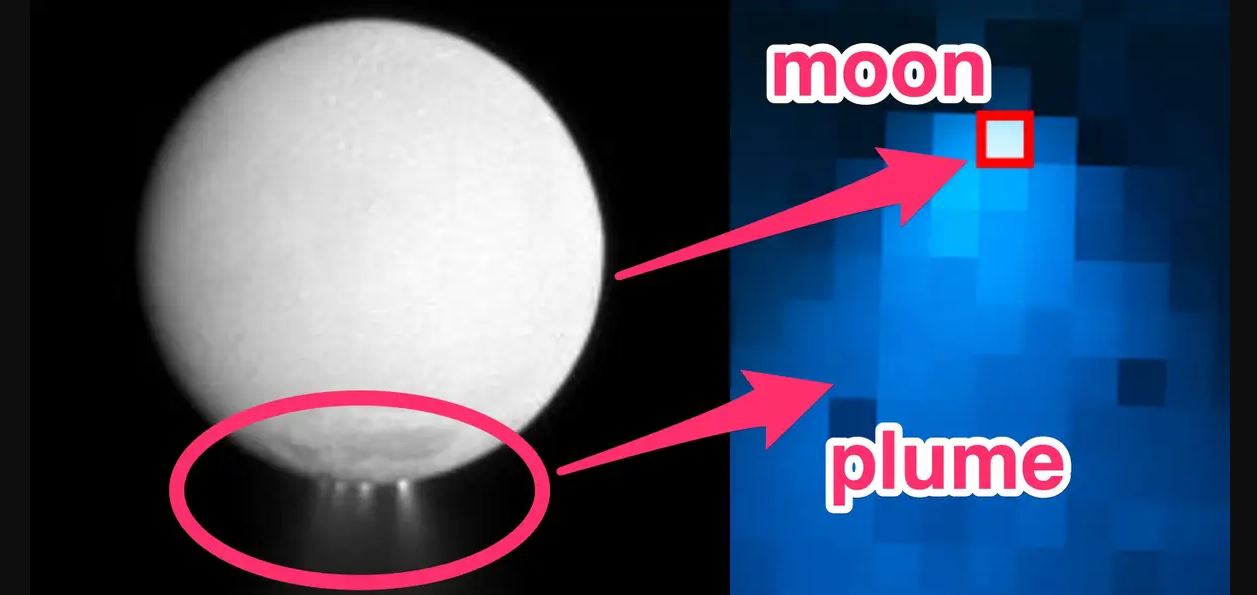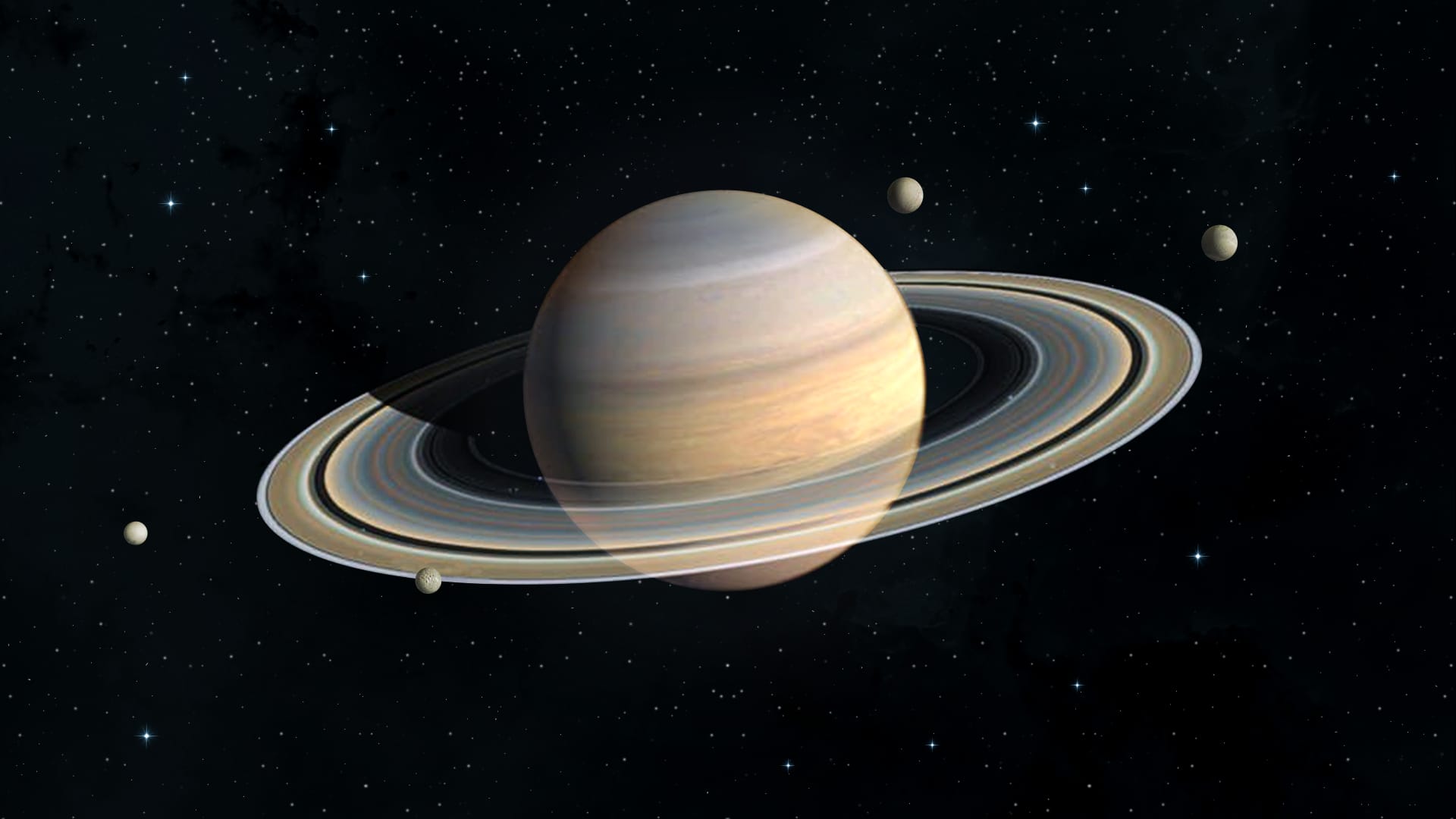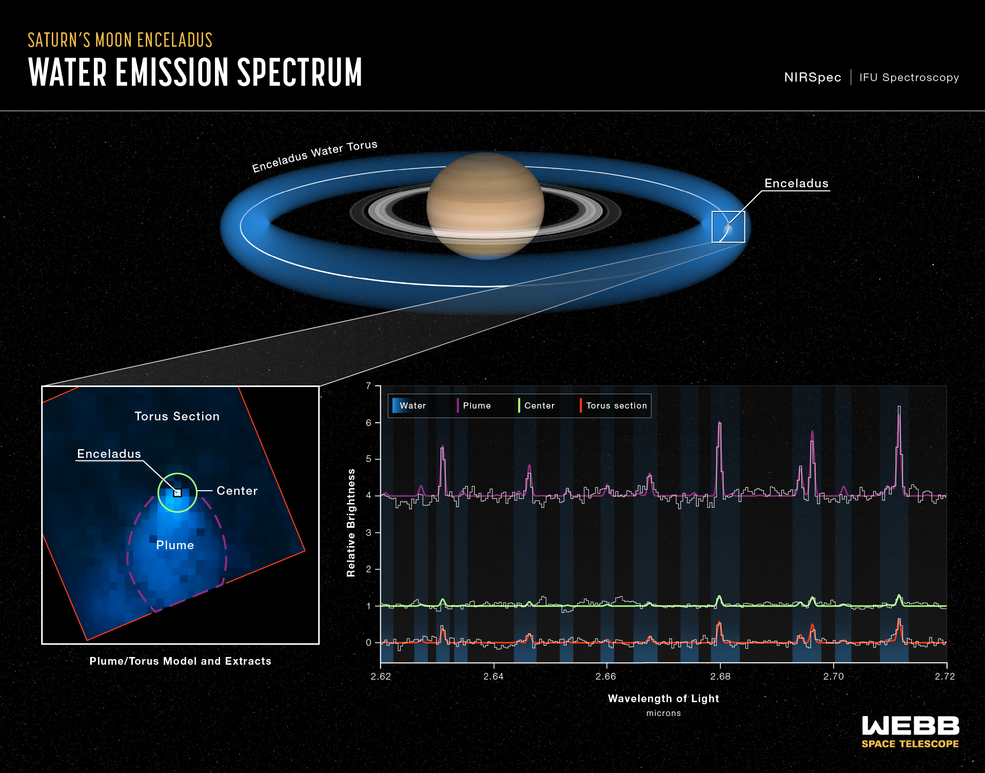NASA's Webb Telescope Detects A Water Jet Twice The US's Length From A Saturn Moon That May Harbor Alien Life
NASA's Webb Telescope detects a water jet twice the US's length from a Saturn moon that may harbor alien life. The moon known as Enceladus astounded astronomers with its remarkable water eruptions, but the recent observations have taken the discovery to new heights.
Author:Dexter CookeReviewer:Camilo WoodJun 02, 20233.8K Shares185K Views

NASA's Webb Telescopedetects a water jet twice the US's length from a Saturn moon that may harbor alien life. The moon known as Enceladus astounded astronomers with its remarkable water eruptions, but the recent observations have taken the discovery to new heights.
Back in 2005, NASA's Cassini spacecraft first detected the mysterious spray emanating from Enceladus' south pole, shattering the notion that it was simply a lifeless icy sphere. The plumes of water unveiled a breathtaking secret hidden beneath the frozen surface global ocean that extends far and wide. This revelation immediately propelled Enceladus to the forefront of potential havens for extraterrestrial life within our solar system.
The Cassini mission provided astronomers with captivating close-up images of Enceladus, offering an unparalleled glimpse into its enigmatic terrain. However, the James Webb Space Telescope, renowned as the most powerful observatory ever launched into space, surpassed its predecessor by capturing an extraordinary view of the moon's salty water plume at an unprecedented scale. The observations from Webb unveiled an awe-inspiring truth - the plumes are far larger than previously imagined.
Webb Revealed An Enormous Plume On Enceladus
NASA announced a groundbreaking discovery - an immense burst of water stretching a staggering 6,000 miles in length, which is twice the size of the continental United States. This revelation left scientists in disbelief, as they struggled to comprehend the sheer magnitude of the finding. Geronimo Villanueva, a scientist at NASA's Goddard Space Flight Center and a lead author on the new Webb findings, expressed his astonishment, stating, "It was just so shocking to detect a water plume more than 20 times the size of the moon."
To put the enormity of the plume into perspective, it is equivalent to the distance between Los Angeles, California, and Buenos Aires, Argentina. Enceladus itself could easily fit between the cities of Los Angeles and San Francisco. The plumes are erupting from the moon's surface at a staggering rate of 79 gallons per second, which means they could fill an Olympic-sized swimming pool in a mere two hours.
Enceladus Formed A Water Donut Around Saturn
Around 30% of the water expelled from the plumes contributes to the formation of a colossal ring of water encircling Saturn, known as a torus. The remainder escapes into Saturn's water system.
Villanueva explained the dynamics, stating, "The orbit of Enceladus around Saturn is relatively quick, just 33 hours. As it whips around Saturn, the moon and its jets are basically spitting off water, leaving a halo, almost like a donut, in its wake." The Webb observations revealed not only the immense size of the plume but also the pervasiveness of water throughout the moon's vicinity.
Enceladus, one of Saturn's 124 moons, captivates scientists due to its fascinating characteristics. Despite being approximately 4% the size of Earth, it holds immense interest due to the potential existence of alien life within its subsurface ocean. If life does exist, it is speculated that it may derive energy from deep-sea vents through chemosynthesis, a process utilized by certain organisms in Earth's deep-sea environments.
The continuous exploration and study of Enceladus have become paramount in the scientific community's quest to understand the origins and possibilities of life beyond our planet. With every new revelation and breakthrough, the enigmatic moon continues to fuel our imagination and deepen our understanding of the cosmos. Enceladus stands as a testament to the vast wonders that await us within our celestial neighborhood, reminding us of the endless mysteries that still beckon us to explore further.

Dexter Cooke
Author
Dexter Cooke is an economist, marketing strategist, and orthopedic surgeon with over 20 years of experience crafting compelling narratives that resonate worldwide.
He holds a Journalism degree from Columbia University, an Economics background from Yale University, and a medical degree with a postdoctoral fellowship in orthopedic medicine from the Medical University of South Carolina.
Dexter’s insights into media, economics, and marketing shine through his prolific contributions to respected publications and advisory roles for influential organizations.
As an orthopedic surgeon specializing in minimally invasive knee replacement surgery and laparoscopic procedures, Dexter prioritizes patient care above all.
Outside his professional pursuits, Dexter enjoys collecting vintage watches, studying ancient civilizations, learning about astronomy, and participating in charity runs.

Camilo Wood
Reviewer
Camilo Wood has over two decades of experience as a writer and journalist, specializing in finance and economics. With a degree in Economics and a background in financial research and analysis, Camilo brings a wealth of knowledge and expertise to his writing.
Throughout his career, Camilo has contributed to numerous publications, covering a wide range of topics such as global economic trends, investment strategies, and market analysis. His articles are recognized for their insightful analysis and clear explanations, making complex financial concepts accessible to readers.
Camilo's experience includes working in roles related to financial reporting, analysis, and commentary, allowing him to provide readers with accurate and trustworthy information. His dedication to journalistic integrity and commitment to delivering high-quality content make him a trusted voice in the fields of finance and journalism.
Latest Articles
Popular Articles

